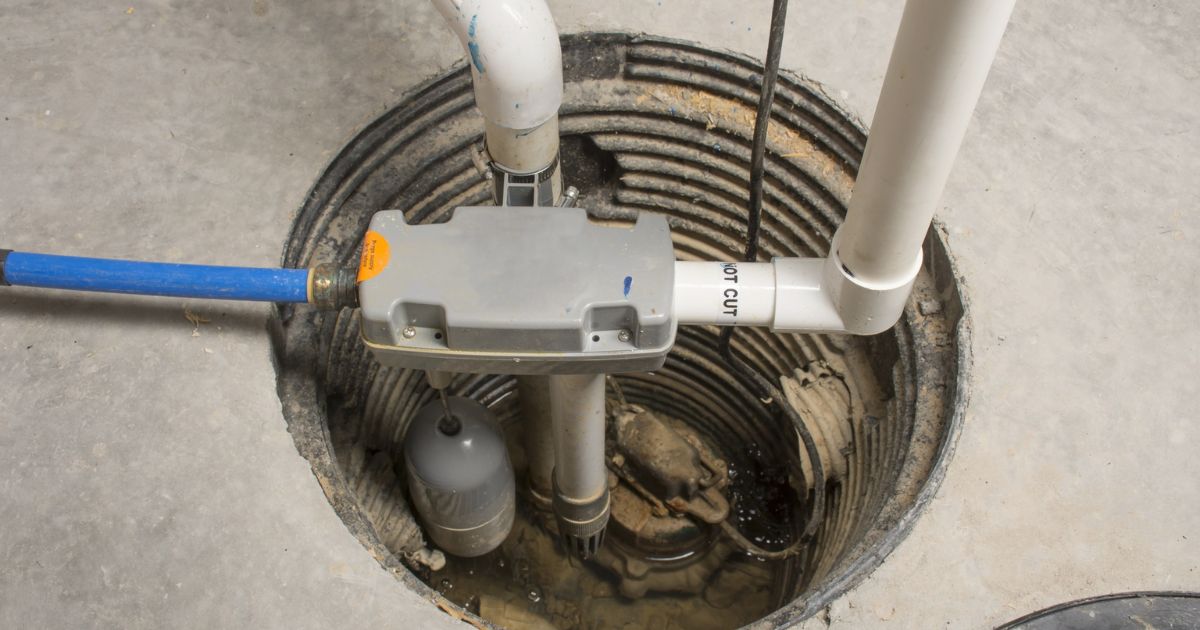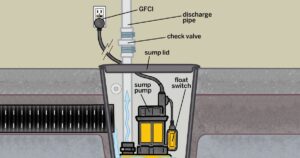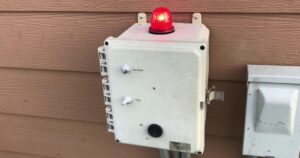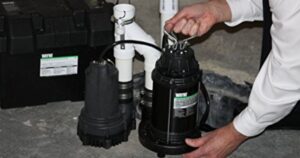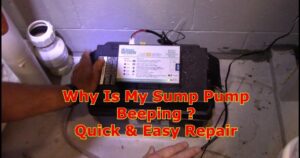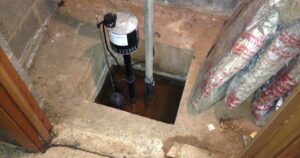Is your sump pump acting like a fickle friend, turning on and off at its own whim? It’s ironic how a device designed to keep your basement dry can be so temperamental. In this article, we will delve into the common reasons behind sump pump cycling and provide troubleshooting tips to address continuous operation, failure to start, water movement issues, and frequent shutdowns. Stay tuned to understand the causes and find practical solutions to this perplexing problem.
Key Takeaways
- High water table can cause frequent on and off cycles of the sump pump.
- Malfunctioning float switch may fail to detect water level, leading to cycling.
- A clogged or frozen discharge pipe can also cause the sump pump to cycle.
- Troubleshooting steps include cleaning or replacing the float switch, inspecting and repairing faulty check valves, and adjusting the float switch or installing a larger capacity pump for excessive water in the sump pit.
Common Reasons for Sump Pump Cycling
Frequently, sump pump cycling occurs due to a few common reasons that can be easily addressed and resolved. One common reason is a high water table, which causes the pump to turn on and off frequently. Another reason is a malfunctioning float switch, which fails to properly detect the water level. Additionally, a clogged or frozen discharge pipe can also lead to cycling. Now, let’s move on to troubleshooting continuous sump pump operation.
Troubleshooting Continuous Sump Pump Operation

To address the issue of continuous sump pump operation, it is important to delve into troubleshooting methods that can effectively resolve this persistent problem. One possible cause could be a malfunctioning float switch, which may require cleaning or replacement. Another potential issue could be a faulty check valve, which may need to be inspected and repaired. Additionally, excessive water in the sump pit could be causing the pump to run continuously, necessitating the adjustment of the float switch or the installation of a larger capacity pump.
Fixing a Sump Pump That Won’t Start
In addressing the issue of a sump pump that won’t start, it is crucial to identify potential causes and implement appropriate solutions. One possible cause could be a tripped circuit breaker or a blown fuse, in which case resetting the breaker or replacing the fuse could solve the problem. Another potential cause could be a malfunctioning float switch, which may require adjustment or replacement. Additionally, a faulty motor or a blocked discharge pipe could also prevent the sump pump from starting, necessitating motor repair or pipe cleaning.
Addressing a Sump Pump That Doesn’t Move Water
To effectively address a sump pump that doesn’t move water, it is important to identify and resolve potential causes of the issue. Here are three possible reasons why your sump pump may not be moving water:
- The discharge pipe is blocked or clogged.
- The impeller or motor is damaged or malfunctioning.
- The float switch is stuck or not functioning properly.
Dealing With a Sump Pump That Keeps Shutting off
Frequently, a sump pump that keeps shutting off may indicate a malfunctioning component or an issue in the system. Several factors could contribute to this problem, such as a faulty float switch, a clogged discharge pipe, or an overwhelmed pump. It is crucial to address these issues promptly to ensure the proper functioning of the sump pump and prevent potential flooding. Understanding the causes of a sump pump running continuously will help in finding the appropriate solutions.
Understanding the Causes of a Sump Pump Running Continuously
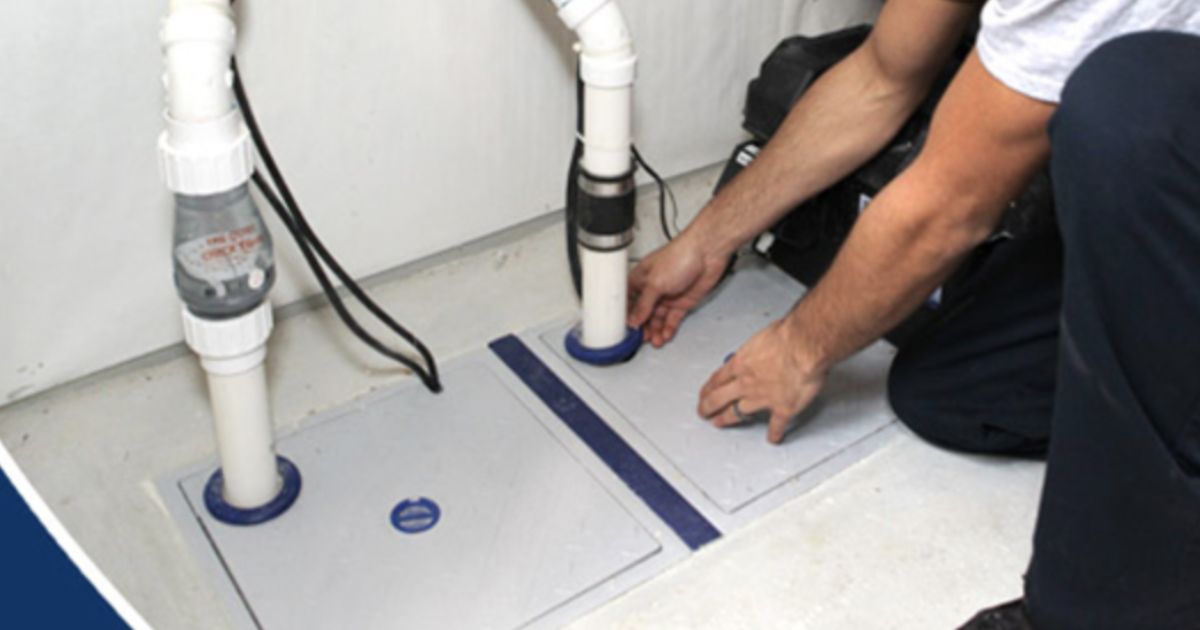
A sump pump that runs continuously can be attributed to various underlying issues, such as a malfunctioning float switch, a clogged discharge pipe, or an overwhelmed pump. These problems can lead to the pump not shutting off when it should, causing it to run continuously. The float switch, which is responsible for activating the pump when the water level rises, may be stuck or damaged. Additionally, a clogged discharge pipe can hinder water flow, causing the pump to keep running. Lastly, an overwhelmed pump may be unable to handle the volume of water, leading to continuous operation.
Resolving Noisy Sump Pump Issues

One possible solution to address the continuous running of a sump pump is to address the underlying issue of excessive noise. Noisy sump pumps can be caused by various factors, including loose components, worn-out bearings, or a malfunctioning motor. To resolve these issues, it is recommended to tighten any loose components, lubricate the bearings, or replace faulty parts. Regular maintenance and inspection can also help identify and resolve any noise-related problems with the sump pump, ensuring its efficient and quiet operation.
Preventing Circuit Breaker Trips and Short Cycling
To prevent circuit breaker trips and short cycling, it is important to address potential causes and implement appropriate measures. Here are three key steps to take:
- Ensure that the sump pump is properly sized for the specific application.
- Install a check valve to prevent backflow and reduce the risk of short cycling.
- Regularly inspect and maintain the sump pump system, including cleaning the pump and testing the float switch.
Frequently Asked Questions
How Much Does It Cost to Replace a Sump Pump?
The cost to replace a sump pump can vary depending on factors such as the type of pump, complexity of installation, and any additional features or upgrades. It is recommended to consult with a professional for an accurate cost estimate.
Can a Sump Pump Be Repaired, or Does It Always Need to Be Replaced?
A sump pump can sometimes be repaired, depending on the issue. However, in certain cases, replacement may be necessary. It is important to consult with a professional to determine the best course of action for your specific situation.
How Often Should a Sump Pump Be Inspected or Maintained?
To ensure optimal performance and prevent malfunctions, it is recommended to have a sump pump inspected and maintained at least once a year. Regular inspections and maintenance can help identify and address any issues before they lead to frequent on/off cycling.
Can a Sump Pump Handle Heavy Rainfall or Flooding?
Can a sump pump effectively handle heavy rainfall or flooding? Sump pumps are designed to remove excess water from basements and crawl spaces, but their capacity may vary. It is important to ensure proper sizing and maintenance for optimal performance in such situations.
Are There Any Safety Precautions to Take When Dealing With a Sump Pump?
When dealing with a sump pump, it is crucial to take safety precautions to ensure optimal performance and prevent damage. These precautions may include regular maintenance, checking for debris, testing the pump, and having a backup system in place.
Conclusion
In conclusion, troubleshooting and fixing a sump pump that keeps turning on and off requires addressing common issues such as continuous operation, failure to start, lack of water movement, and frequent shut-offs. Noisy sump pump problems and circuit breaker trips should also be resolved to ensure proper functioning. By understanding the causes and implementing appropriate solutions, homeowners can prevent water damage and maintain a reliable sump pump system. Like a vigilant guardian, a well-maintained sump pump stands ready to protect your basement from potential flooding. Learn more “How to tell if sump pump is clogged?“
